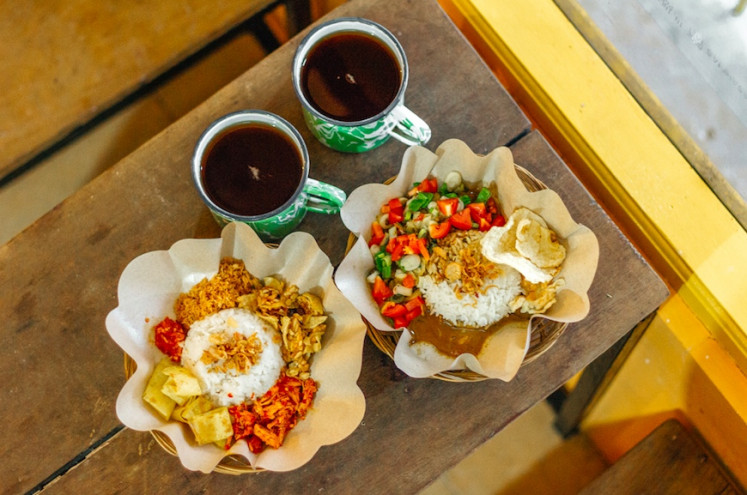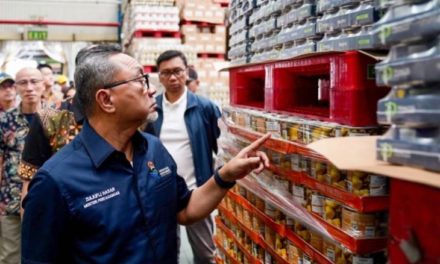
Earlier this month The Jakarta Post food column titled TWENTIES ‘served’ readers an article describing a list of 20 different types of Indonesian crackers or ‘kerupuk.’ They can be eaten as standalone snacks or as a delicious accompaniment to your meal
As every Indonesian and Indonesian food lover will tell you as an archipelagic country, Indonesia has a variety of culinary specialties from all its many islands. However, Indonesian cuisine has one side dish that is a staple on almost all dining tables across the country—kerupuk. Generally made from tapioca flour, there are a plethora of varieties—but here are the top 20 that was compiled by The Jakarta Post:
| Kerupuk Bawang (Onion) | Kerupuk Udang (Prawn) | Kerupuk Melinjo | Kerupuk Blek | Kerupuk Rambak |
| Kerupuk Gendar | Kerupuk Kemplang | Rengginang | Kerupuk Melarat | Kerupuk Amplang |
| Rempeyek | Opak Singkong | Kerupuk Jengkol | Kerupuk Kluntung | Kerupuk Mie |
| Kerupuk Orong-Orong | Kerupuk Ikan (Fish) | Kerupuk Pangsit | Peletekan | Gurilem |
Shared here are several of the descriptions to whet your appetite. For the full list of the 20 above visit here.
‘Kerupuk Bawang’
Kerupuk bawang has a savory and crunchy taste that comes from garlic, hence kerupuk bawang (garlic cracker). In addition to garlic, kerupuk bawang needs other ingredients such as flour, salt, pepper powder, sugar, baking soda and water. This cracker is available in almost all parts of Indonesia. However, the kerupuk bawang in Indragiri Hulu Riau is different because it uses coconut milk as an additional ingredient. Due to its uniqueness, kerupuk bawang has become a must-buy snack souvenir from the area.
‘Kerupuk Udang’
This cracker originates from Sidoarjo, East Java. The fishermen of Sidoarjo used to be perplexed by the abundance of fish and shrimp they caught, so they invented kerupuk udang (prawn cracker). The catches were used as the primary material for making the crackers. Tapioca flour and mashed shrimp are the essential ingredients in kerupuk udang. Aside from the strong shrimp flavor, kerupuk udang has a high nutritional content, including phosphorus, calcium and iron.

‘Kerupuk Melinjo’
This cracker has a slightly bitter taste and does not use tapioca flour or fish as the primary ingredients. The people of Selayar, South Sulawesi, make this cracker from melinjo seeds. As one of the traditional dishes of the province, these crackers are made traditionally by grounding the melinjo seeds one by one to produce their natural flavor. Kerupuk melinjo, frequently known as emping, is available in a variety of flavors, including salty, spicy and sweet, depending on the amount of salt or caramelized sugar added.
‘Kerupuk Blek’
Kerupuk blek dates back to the 19th century when cassava production was abundant in Java. Only someone called a tukang ngabalo (concoctor) can make kerupuk blek dough. After the tukang ngabalo finishes the dough, it is placed in a container resembling a large pipe and pressed with a stone by someone known as juru batu (stoneman). After the dough-making process is completed, the dough will be moved to an ebeg, which is similar to a frame booth. The ebeg is about a meter long and half a meter wide. The dough is dried before being fried in high-temperature coconut oil. The finished product is typically stored in a blek (zinc food container), which is how it earned its name.
‘Kerupuk Rambak’
Kerupuk rambak (skin cracker) is made by soaking cow hide in lime water for 48 hours. In addition to the soaking, the hairs on the skin are removed with a knife. The clean skin is sun-dried, cut into size-appropriate pieces and boiled with garlic, salt and sugar. Once cooked, the skin is drained and dried before being fried again. Tulungangung, East Java, is the home of kerupuk rambak. Nonetheless, it is frequently found along with Yogyakarta’s traditional dish krecek.
The above article was published in thejakartapost.com with the title “Twenties: The crinkles and crackles of 20 Indonesian beloved crisp and crackers”. Click to read full version here.








